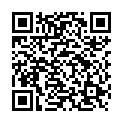|
|
|
| Module code: MST105 |
|
4V+1U (5 hours per week) |
|
5 |
| Semester: 1 |
| Mandatory course: yes |
Language of instruction:
German |
Assessment:
Written exam
[updated 22.07.2012]
|
MST105 Mechatronics and Sensor Technology, Bachelor, ASPO 01.10.2005
, semester 1, mandatory course
|
75 class hours (= 56.25 clock hours) over a 15-week period.
The total student study time is 150 hours (equivalent to 5 ECTS credits).
There are therefore 93.75 hours available for class preparation and follow-up work and exam preparation.
|
Recommended prerequisites (modules):
None.
|
Recommended as prerequisite for:
MST205 Engineering Statics and the Strength of Materials
MST306 CAD in Mechanical Engineering
MST404 Precision Manufacturing with Lab Course
[updated 04.08.2012]
|
Module coordinator:
Prof. Dr. Günter Schultes |
Lecturer: Prof. Dr. Günter Schultes
[updated 01.10.2005]
|
Learning outcomes:
In this module, students will learn to read, understand and create technical drawings, which are an essential element of daily communication in engineering and technical environments.
Particular emphasis is placed on instilling the necessary critical approach to working with engineering tolerances. Students will be introduced to the most important design elements and machine components and will learn how to assess these elements and use them in simple engineering constructions.
The overall aim of this module is to teach students how to use technical drawings and to provide them with an appreciation of the range of mechanical engineering elements available.
[updated 22.07.2012]
|
Module content:
1. Introduction; basic geometric objects and sketching techniques
2. Technical drawing; modes of representation; dimensioning; tolerances; systems of limits and fits; surfaces; standardization
3. Designing components; loading and stress modes; optimized forms
4. Design and machine elements; types of joints and connections; connective elements; springs; bearings and guides
5. Mechanical properties of engineering materials; stress-strain diagrams; material characteristics
[updated 22.07.2012]
|
Teaching methods/Media:
Lectures and problem-solving classes
Drawing and design work
[updated 22.07.2012]
|
Recommended or required reading:
HOISCHEN H., Technisches Zeichnen, Cornelsen Verlag
Tabellenbuch Metall, Europa Lehrmittel, Verlag Nourney, Vollmer
Labisch S., Weber CH., Otto P., Technisches Zeichnen Grundkurs, Vieweg Verlag
Viebahn U., Technisches Freihandzeichnen, Springer Verlag
KRAUSE, W., Grundlagen der Konstruktion, Hanser Verlag
[updated 22.07.2012]
|


